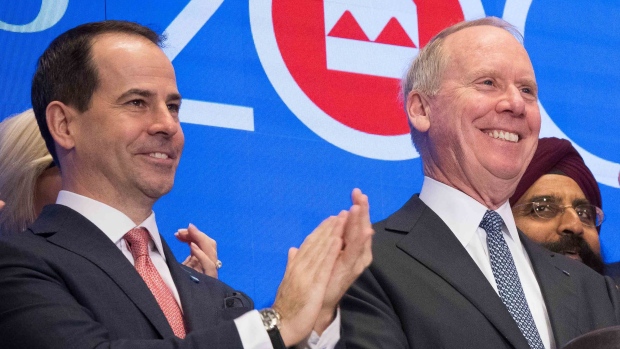Apr 7, 2017
Three priorities for new BMO CEO Darryl White
By Paul Bagnell
Investors yawned at Bank of Montreal’s CEO succession announcement Friday – and that’s a good thing.
Markets like smooth transitions when successful corporations undergo leadership changes, and BMO (BMO.TO) telegraphed this one clearly last year when Darryl White became chief operating officer. White will succeed Bill Downe as BMO’s CEO on November 1.
Remember the case of Canadian Imperial Bank of Commerce (CM.TO), which botched its succession planning in 2014. Then-CEO Gerry McCaughey announced he would step down in 2016 – but no replacement was named, and McCaughey himself was in the first year of a new contract. By the time Victor Dodig had taken over as CIBC’s CEO, the bank was on the hook for exorbitant compensation payouts to McCaughey and another former executive – despite the fact that both had since left. Investors seethed, and Dodig had an embarrassing mess on his hands early in his tenure.

So BMO got it right on succession. Here are some thoughts on what White needs to get right when he takes the top job later this year.
Building on BMO’s presence in the United States
Downe’s signature accomplishment is the US$4.1-billion 2010 acquisition of Marshall & Ilsley Bank in the United States. It doubled BMO’s U.S. branch network, and drastically increased deposits and assets under management south of the border. But the acquisition was not inexpensive – they never are in U.S. banking – and all these years later, the market is still waiting for consistently strong results from BMO’s U.S. operations. That job now falls to White.
And the timing may be right. With clear signs of growth in the U.S. economy, and with interest rates on the rise, there may be no better time to own a leading business lender in the U.S. heartland.
Last week, after BMO held its annual general meeting, I had a chance to talk to Downe briefly about that topic. I asked him how BMO’s business customers were feeling about their prospects, given all the change since the presidential election. He told me they are bullish. They look forward to building their businesses amid lower corporate taxes and a U.S. economy kick-started with an infrastructure-spending push. Even higher rates are a plus, Downe told me. He’s in the camp that believes ultra-low interest rates sent a dreary signal for too long to businesses about economic prospects. Rising rates are a sign things are getting better, and that means BMO’s U.S. banking operations may be set to blossom further under White. I say “further” because there already some very positive trends. When BMO reported results in late February, net interest margins in the U.S. expanded by 12 basis points and credit quality improved.
Avoiding another wobble on capital levels
In October last year, BMO announced a surprise restatement of its common equity tier 1 ratio, a move that reduced $1.3 billion of capital from the bank’s balance sheet, according to analyst John Aiken at Barclays Capital. The capital was rebuilt by a full percentage point by the time BMO reported results in February of this year, but capital remains a talking point at BMO and White’s messaging on this will be key. Remember, it was BMO that waited the longest to raise its dividend after the financial crisis.
Maintaining BMO’s strong performance in Canadian retail banking
One of the big thrusts of Downe’s time at the top was improving a Canadian retail banking business that had lagged its competitors in customer satisfaction and mortgage market share. Under his leadership, BMO worked relentlessly to improve customer satisfaction -- and it worked. Royal Bank and Toronto-Dominion Bank still score higher on independent surveys of customer satisfaction, however, so there is more work to. Over to White.




